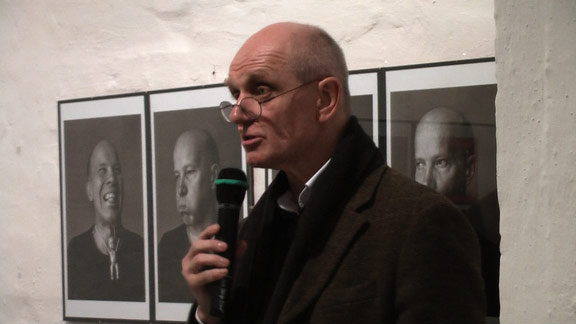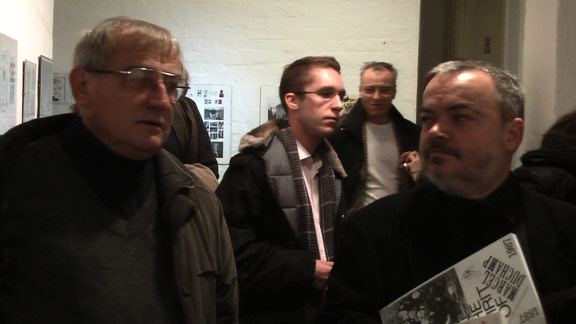The HistoRAY Johnson Fan Club Meeting | magyar
Péter György: Duchamp 2007/2008
Presentation of the catalogue "Hommage à Marcel Duchamp" documenting the event (symposium, concerts and exhibition) "In the Spirit of Marcel Duchamp"

Ready-made is a form of art addressing the very nature of art. Duchamp was – and will always remain – the master of what could be seen as self/critical/conceptual/artwork.
That is: The artwork is itself as well as its own criticism; an object in a white box; its presence is also the radical criticism of the institution of museums.
These days the narrative and personalness are interrelated – it is not very Duchampian; in any case, it’s strange that there’s no Duchampism – so let me quote a personal memory. Last year I was sitting in front of The Large Glass in Philadelphia with a glass window set in the wall and a park behind it. This was meant to be a moment of autopsy. The most complicated part of approaching a masterpiece and of encountering the original is: to be liberated from knowledge, the fear of weather the time allotted to me is enough or not, whether I’ve done enough reading and enough preparation, etc. And waiting for the Kantian contemplative, neutral aesthetic experience to take control of me. I don’t know to what degree of success others can do this exercise. I do quite a lot of training in this respect – no easy task. To be honest: what I’m talking about here is that there is a slow process of transmutation from erudition to sensuality, and the traces created by the former, i.e. the network of various forms of knowledge, are deluged with fear and terror, or with desire. Personally, Rembrandt does this with (to) me.
Now, with Duchamp autopsy is exactly like an artwork itself: it is a conceptual, cognitive process based on self-observation. I can see through the glass, out onto the park… what lights are coming… how the meaning of the hall changes as permanent exhibitions are constantly undergoing change and as Philadelphia is in a continuous state of metamorphosis.
Duchamp’s relentless look – forcing and moulding the doubts inherent in an artwork into conceptual structures. Duchamp constructs traps, traps of seeking and creating meaning, and that of interpretation. This unavoidable Gedank experiment can be attacked from one position, and rather powerfully.
That is, Duchamp’s method is valid only up to the point where the question about the very nature of art – the self-criticism of an artwork – begins to demand the radical criticism of society. It’s not just that Duchamp did not know much about solidarity – generally referred to as “social” – although there is enough that could be said about this, too.
The problem is that when the boundaries between social and cultural systems and sets of concepts are all rewritten, and when tectonic vibrations rewrite our concepts and experiences one after the other, then what do we do with all this?

Since this is how we live these days:
Hybrid, liquid, fragmented, fractional, cosmopolitan, place-specific, local, uncertain, relationist, defined in cultural spaces, collective, public art, auto-destructive, installation, video, environment, land art, objects, post-conceptual, network, temporal, temporary, critical of institutions, social, post social, everything but aesthetic –
Twenty years ago – I’m afraid – to be an adherent to Duchamp – such hope could undoubtedly be regarded as interesting and valid. 1987 was a curious moment: we did not see how close to the end we were, and what a rare moment it actually was. In 2007/2008 Duchamp is one of the objects Mark Dion places in show-cases –the criticism that was practised by Duchamp in another section has become historicized.
(English translation by
Krisztina Sarkady-Hart)
The HistoRAY Johnson Fan Club Meeting | THE MARCEL DUCHAMP CLUB